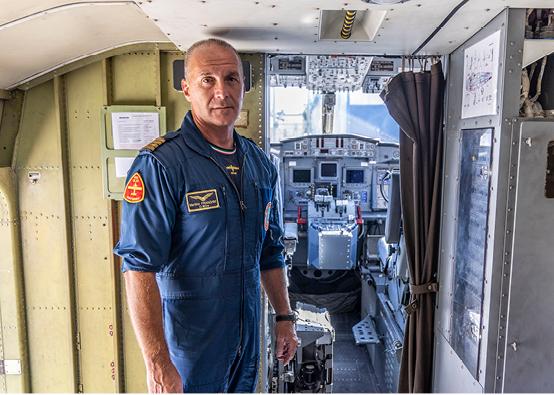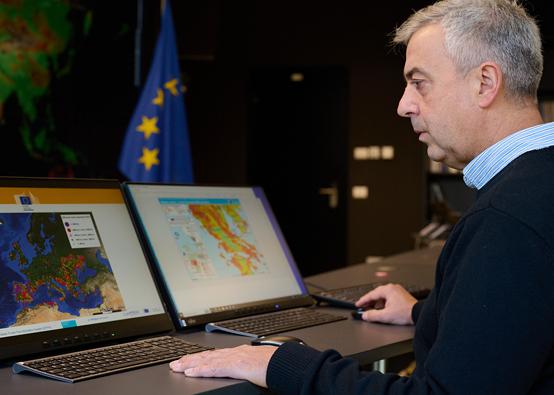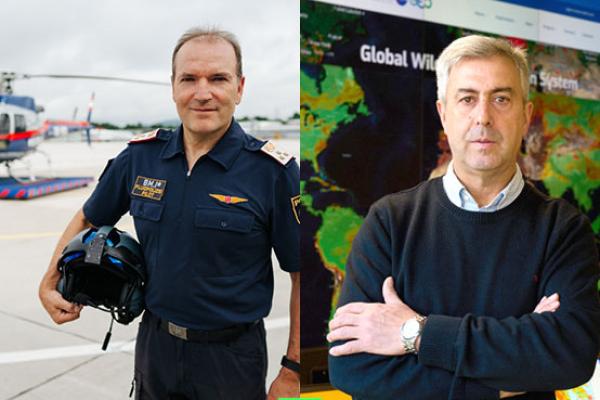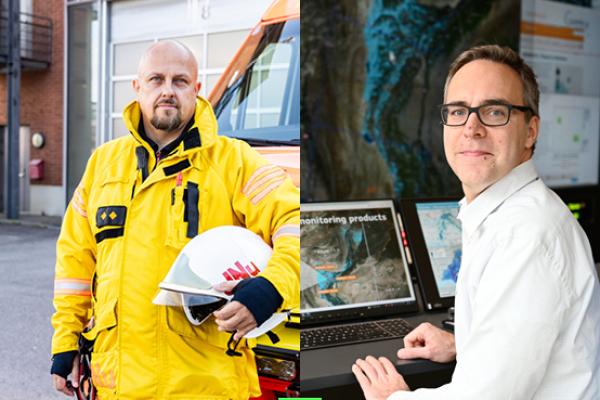When wildfires broke out in Germany’s Harz National Park in September 2022, German authorities called on the EU’s Civil Protection Mechanism to help save the forest. Supported by EU’s satellite data, Italian pilot Martino Franchini flew in to help fight the blaze.
Due to climate change, we are facing wildfires that are more dangerous, more damaging and more frequent than ever before.
In 2022 in the EU alone, wildfires burnt an area roughly the size of Corsica. And 2023 set its own records with the largest fire ever recorded in the EU, in Greece’s Alexandroupolis region.
In September 2022, wildfires broke out on the southern side of the Brocken mountain in Germany’s Harz National Park.
The day after the fire started, it was threatening to burn out of control. In just a few hours, the size of the wildfire doubled from 60 to 130 hectares and firefighting teams feared it would spread further.
To help them put out the flames, German authorities contacted the EU’s Emergency Response Coordination Centre (ERCC), which coordinates the delivery of assistance from the 27 EU countries and 10 participating states in the EU Civil Protection Mechanism.
Firefighters from Italy quickly arrived with waterbomber aircraft to help German responders save the national park.
 27 EU countries
27 EU countriestake part in the EU Civil Protection Mechanism
 10 participating states
10 participating statesalso take part
 12 hours
12 hoursfor pilots to arrive from Italy
Flying in to fight the flames
As soon as the call for help came via the ERCC, Martino Franchini, a Canadair pilot from Italy, sprang into action. He arrived less than 12 hours after the request was made, ready to fly over the flames in a special plane that scoops up water from lakes, rivers and seas to release over wildfires.
Due to the steep hills in the national park, this mission was particularly challenging. However, Franchini was undaunted.
“My experience and my training helped me to fly safely,” he explains. “My team receives information about weather conditions before I take off, pick up water and drop it over the wildfire.”
Franchini worked alongside firefighting teams from Germany. To help teams on the ground, Germany also activated EU's Copernicus Emergency Management Service (CEMS) – a service providing detailed geo-spatial information – to monitor the developing situation.
Together, the firefighting teams extinguished the wildfires, saving the national park from further damage and protecting the forests that lynx, peregrine falcons and many other animals call home.
Manchini stresses that none of this could have been done alone.

The importance of the EU coordination is absolutely fundamental, the cooperation between different countries makes us more efficient and able to react.
Tracking the weather to stay one step ahead
Jesús San-Miguel-Ayanz is the leader of the European Forest Fire Information System (EFFIS) and Global Wildfire Information System (GWIS) teams at the EU’s science service in Ispra, Italy.
San-Miguel-Ayanz and his team of experts tracked the wildfires in Germany’s Harz National Park, providing valuable information to firefighting teams on the ground. Thanks to this satellite mapping and weather monitoring, firefighting teams could monitor the developing situation and see where flames were likely to spread if they didn’t act.
San-Miguel-Ayanz has spent over 25 years monitoring and tracking wildfires and has seen the situation in Europe become more severe.

Climate change scenarios show that the wildfire danger will increase. We’re now seeing wildfires in countries that didn’t traditionally suffer from them and outside of the traditional fire season.
Preparing for the future
In response to the increasing wildfire risk, the EU has scaled up its firefighting capabilities. Ahead of the 2023 wildfire season, the rescEU firefighting air fleet was reinforced to include 28 firefighting planes and helicopters.
In preparation for each wildfire season, the EU is also financing and facilitating the prepositioning of firefighters in areas at risk of wildfires. This means that they will be ready and can act immediately if fire breaks out, stopping it before it spreads out of control and limiting the area burnt.
These resources are already being used to help overstretched national firefighting services cope with unprecedented wildfires.
In summer 2023, there were devastating wildfires in Cyprus, Greece, Italy, and Tunisia. Only in Greece’s Alexandroupolis region, the EU Civil Protection Mechanism coordinated the biggest ever rescEU aerial firefighting operation.
Additionally, the Commission has launched the Wildfire Peer Review Assessment Framework, a tool to help countries assess their capacity to prevent and prepare for wildfires and share good practice exchange.

Discover more stories

When fires broke out in Slovenia in July 2022, the EU’s Civil Protection Mechanism sprang into action. EU satellite mapping determined the progression and direction of the fires and Austrian helicopter pilot Josef Samonig used this to decide where to focus his firefighting efforts.

When floods in Pakistan washed away roads and made travel treacherous, authorities asked for help from the EU Civil Protection Mechanism. Guided by the EU’s satellite maps, Finnish logistics expert Juuso Nummela helped ensure life-saving aid arrived where it was needed most.

With Madagascar’s response capacity pushed to the brink by 5 consecutive tropical storms in 6 weeks, the country requested assistance from the EU Civil Protection Mechanism. Disaster response experts came to their aid from France and across Europe. Advance preparation and a swift response protected people from suffering even more.
